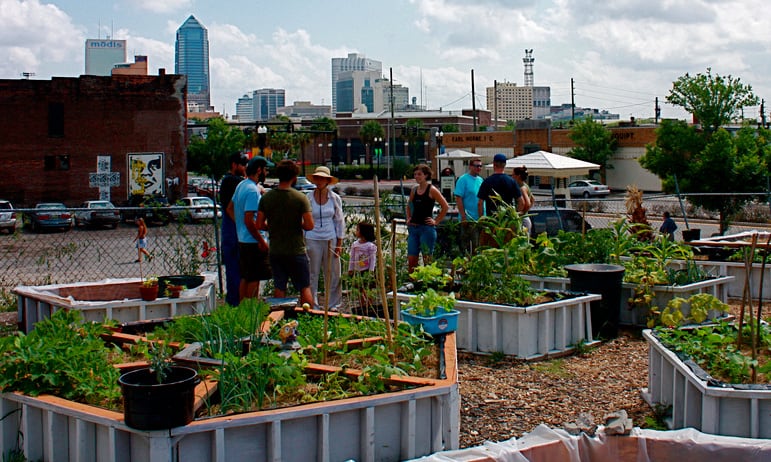See This Report about City Blooming
Some Known Details About City Blooming
Table of ContentsAn Unbiased View of City Blooming10 Easy Facts About City Blooming Described9 Simple Techniques For City BloomingNot known Incorrect Statements About City Blooming Examine This Report on City Blooming
Interested in growing food offer for sale in the City of Chicago? Assuming about beginning an area yard? Changes to the Chicago Zoning Regulation permit farming uses like area yards and metropolitan ranches in lots of parts of the city. Below is a list of regularly asked concerns concerning the regulations and laws that farmers ought to consider when preparing a city agriculture job.
The zoning amendment does not customize any kind of other codes dealing with composting, structure authorizations, purchasing or renting City owned building, company licenses or ecological contamination. There are existing codes that manage these issues and they stay in full result and might be suitable to your project. Area gardens are usually owned or managed by public entities, civic organizations or community-based organizations and preserved by volunteers.
Urban ranches expand food that is planned to be sold, either on a not-for-profit or for-profit basis. As a result of their commercial function, city farms need a business permit. Yes. An area yard is permitted to market surplus produce that was grown on site if the sales are accessory or subordinate to the garden's main objective defined over.
The City Blooming Ideas
Composting is permitted but just for plant product that is produced and made use of on website. The amount of garden compost material can not surpass 25 cubic backyards at any given time according to the criteria in 7-28-715 of the City's Municipal Code. Yes. Since the soil at most new garden sites requires modifying, compost, soil, wood chips, or other products can be obtained to build or enhance the growing space - home and garden.

If a building license is called for then the hoophouse will certainly be taken into consideration an accessory building. You can figure out even more about the building license needs by calling the Department of Structures. The 25,000-square-foot dimension limit is meant to stop a solitary community yard from controling a given block or detracting from the block's existing domestic or business character.
The limitation does not use to gardens situated in Public Open Room (POS) areas. Can there be more than one area garden that is 25,000 square feet on a solitary block? Secure fencing is not needed, nonetheless, yards that have big vehicle parking locations may be needed to install secure check these guys out fencing or various other landscape design features.
City Blooming Fundamentals Explained
B1 & B2 districts call for that all business use activities be conducted inside. R districts restrict industrial activity. The guidelines mirror the objective and intent of the Zoning Code. Is fencing required for city ranches? Yes. Fencings might be called for, along with landscaping and testing, for sure parking lot and outside job or storage space locations depending upon area and the details task happening.
Yes. Urban farms need building authorizations and zoning approvals before construction. Other types of city review may be required depending on certain frameworks, tasks, dimension, landscaping, licensing, public heath and stormwater administration problems. Most of these demands are determined in the project style or permitting procedure, nonetheless, the candidate may be responsible to independently recognize specific licenses or allows that might be called for.
The Department of Organization Matters and Customer Security can assist determine the certain type of company permit that's called for. Off road parking is required for many industrial projects in Chicago. The required number of parking areas is based on the number of workers working on site and not the square video footage of the growing space.
The Ultimate Guide To City Blooming

A city ranch can market garden compost material generated on site, nevertheless, the procedure needs to comply with the policies in 7-28-715 of the Chicago Municipal Code. Aquaponic systems are permitted indoors on metropolitan ranches in many zoning districts.
Up to five hives or nests of honey bees might be maintained as an accessory use. Beekeepers need to sign up with the Illinois Division of Agriculture. To find out more concerning the recommended zoning amendment you may get in touch with the Department of Housing and Economic Development, Bureau of Planning and Zoning at 312.744.8563.
, which takes area in rural locations at the side of residential areas.
8 Simple Techniques For City Blooming
, that look for to form social networks founded on a shared values of nature and neighborhood holism. These networks can create by means of official institutional support, coming to be integrated into local town planning as a "change community" activity for sustainable metropolitan advancement.
The more straight accessibility to fresh vegetable, fruit, and meat items that might be become aware through urban farming can boost food protection and food safety while decreasing food miles, resulting in reduced greenhouse gas discharges, thus adding to climate adjustment mitigation. A few of the first proof of city agriculture originates from Mesopotamia.